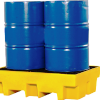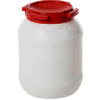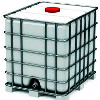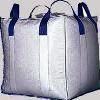Methylene Blue Manufacturers USP, Methylthioninium Chloride BP Suppliers, India
Anmol Chemicals are manufacturers of Specialty Chemicals and Pharmaceutical Excipients, in India. Anmol Chemicals Group has manufacturing facilities spread across India, representatives in Houston Chicago USA and toll manufacturers in China. We make IP, BP, USP, Ph Eur, FCC or Food Grade, ACS, AR or Analytical Reagent Grade, LR or Laboratory Reagent Grade and Pure Grades of various chemicals. All our items are analyzed to meet the required standards.
Our manufacturing facility is FDA GMP approved and ISO-9001, ISO 14000, OHSAS 18000, ISO 22000, FSSAI HACCP certified. We are offering products manufactured as per Kosher and Halal approved method. We are pre-registered with "Reach" for export to European countries.

Methylene Blue USP
Methylene Blue
C16H18ClN3S·3H2O 373.90
Phenothiazin-5-ium, 3,7-bis(dimethylamino)-, chloride, trihydrate.
C.I. Basic Blue 9 trihydrate [7220-79-3]
Anhydrous 319.86 [61-73-4]
Methylene Blue contains not less than 98.0 percent and not more than 103.0 percent of C16H18ClN3S, calculated on the dried basis.
Identification: Infrared Absorption 197K .
Loss on drying— Dry it at 75 and at a pressure not exceeding 5 mm of mercury for 4 hours: it loses
between 8.0% and 18.0% of its weight.
Residue on ignition: not more than 1.2%.
Arsenic— Prepare the Test Preparation by mixing 0.375 g with 10 mL of water in the arsine generator flask. Add 15 mL of nitric acid and 5 mL of perchloric
acid, mix, and heat cautiously to the production of strong fumes of perchloric acid. Cool, wash down the sides of the flask with water, and again heat to strong fumes.
Again cool, wash down the sides of the flask, and heat to fumes. Cool, dilute with water to 52 mL, and add 3 mL of hydrochloric acid: the resulting solution meets the
requirements of the test, the addition of 20 mL of 7 N sulfuric acid specified for Procedure being omitted. The limit is 8 ppm.
Copper or zinc— Ignite 1.0 g
in a porcelain crucible, using as low a temperature as practicable, until all of the carbon is oxidized. Cool the residue, add 15 mL of 2 N nitric acid, and boil for
5 minutes. Filter the cooled solution, and wash any residue with 10 mL of water. To the combined filtrate and washing add an excess of 6 N ammonium hydroxide, and
filter the solution into a 50 mL volumetric flask. Wash the precipitate with small portions of water, adding the washings to the filtrate, dilute the solution with
water to volume, and mix. To 25 mL of the solution add 10 mL of hydrogen sulfide TS: no turbidity is produced within 5 minutes (absence of zinc). Any dark color
produced does not exceed that of a control prepared by boiling a quantity of cupric sulfate, equivalent to 200 @g of copper, with 15 mL of 2 N nitric acid for 5 minutes
and by treating this solution as directed above, beginning with “Filter the cooled solution” (0.02% of copper).
Chromatographic purity— Quantitatively dissolve an accurately weighed quantity of Methylene Blue in methanol to obtain a Test solution containing 1.0 mg per mL
Dissolve a suitable quantity of USP Methylene Blue RS in methanol to obtain a Standard solution having a concentration of 100 @g per mL. Quantitatively dilute a portion
of this solution with methanol to obtain a Diluted standard solution having a concentration of 10 @g per mL. Apply 5 @L each of the Test solution, the Standard solution,
and the Diluted standard solution to a suitable thin-layer chromatographic plate coated with a 0.25-mm layer of octadecylsilanized chromatographic silica gel. Allow the
spots to dry, and develop the chromatogram in a chromatographic chamber with a solvent system consisting of a mixture of the upper layer separated from a well-shaken
mixture of water, n-butanol, and glacial acetic acid (100:80:20), until the solvent front has moved about three-fourths of the length of the plate. Remove the plate from
the chamber, allow the solvent to evaporate, and visually locate the spots on the plate: the RF value of the principal spot in the chromatogram from the Test solution
corresponds to that from the Standard solution, and other spots, if present in the chromatogram from the Test solution, consist of a secondary spot that does not exceed
in size or intensity, the principal spot obtained from the Standard solution (10%), and not more than two additional spots, neither of which exceeds in size or intensity
the principal spot from the Diluted standard solution (1%)Assay— Transfer about 100 mg of Methylene Blue, accurately weighed, to a 250-mL volumetric flask, dissolve in
and dilute with diluted alcohol to volume, and mix. Transfer 5.0 mL of this solution to a 100-mL volumetric flask, dilute with diluted alcohol to volume, and mix.
Transfer 5.0 mL of this solution to a 50-mL volumetric flask, dilute with diluted alcohol to volume, and mix. This solution contains about 2 @g per mL. Dissolve an
accurately weighed quantity of USP Methylene Blue RS in diluted alcohol, and dilute quantitatively and stepwise with diluted alcohol to obtain a Standard solution
having a known concentration of about 2 @g per mL. Concomitantly determine the absorbance of both solutions in 1-cm cells at the wavelength of maximum absorbance at
about 663 nm, with a suitable spectrophotometer, using diluted alcohol as the blank. Calculate the quantity, in mg, of C16H18ClN3S in the Methylene Blue taken by the
formula:
50C(AU / AS)
in which C is the concentration, in @g per mL, of anhydrous methylene blue in the Standard solution; and AU and AS are the absorbance of the solution of Methylene Blue and the Standard solution, respectively.
Methylthioninium Chloride BP or Methylthioninium Chloride Ph. Eur is also offered.
IUPAC name is 3,7-Bis(dimethylamino)phenothiazin-5-ylium chloride or 3,7-bis(Dimethylamino)-phenothiazin-5-ium chloride

Manufacturers
ANMOL CHEMICALS
S-8, SARIFA MANSION, 2ND PRINCIPAL SHAIKH HASAN MARG, MUMBAI 400009, INDIA
TEL: (OFF) 91-22-23726950, 23774610, 23723564. FAX: 91-22-23728264
e-mail: info@anmol.org
Copyright and Usual Disclaimer is Applicable
Exporters to USA, UAE, Europe, South Africa, Tanzania, Kenya, Egypt, Turkey, Nigeria, Uganda, Brazil, Chile, Argentina, Dubai etc.
Representatives in New York, Houston - Texas, Chicago - Illinois, Los Angeles.
Fast Selling IP BP USP ACS FCC Food Grades of Chemicals by Anmol Chemicals
Aluminum Chloride ---------- Ammonium Sulfate ----- Ammonium Persulfate
Aluminum Potassium Sulfate - Ammonium Chloride ---- Ammonium Bicarbonate
Ammonium Carbonate --------- Benzyl Alcohol ------- Boric Acid
Benzoic Acid --------------- Borax; Sodium Borate - Calcium Chloride
Calcium Hydroxide ---------- Calcium Acetate ------ Calcium Butyrate
Calcium Lactobionate ------- Calcium Levulinate --- Calcium Saccharate
Carbamide Peroxide --------- Citric Acid ---------- Calcium Phosphate
Calcium Oxide -------------- Calcium Sulfate ------ Chromic Chloride
Cupric Chloride ------------
Ferric Chloride ------------ Ferric Nitrate ------- Fumaric Acid
Gentian Violet ------------- Glacial Acetic Acid
Lactobionic Acid ----------- Magnesium Butyrate
Magnesium Oxide ------------ Magnesium Chloride --- Magnesium Sulfate
Malic Acid ----------------- Maleic Acid ---------- Manganese Chloride
Manganese Sulfate ---------- Methylene Blue ------- Oleic Acid
Octyldodecanol -------------
Propylene Carbonate -------- Potassium Acetate ---- Potassium Carbonate
Potassium Hydroxide -------- Potassium Chloride --- Potassium Phosphate
Potassium Bitartrate ------- Propylene Carbonate -- Selenious acid
Sodium Molybdate ----------- Sodium Perborate ----- Sodium Phosphate
Sodium Propionate ---------- Sodium Acetate ------- Sodium Bicarbonate
Sodium Hydroxide ----------- Sodium Chloride ------ Sodium Thiosulfate
Sodium Selenite ------------ Urea ----------------- Zinc Chloride
Other Best Selling Products
Ammonium Bromide ----------- Ammonium Phosphate --- Barium Chloride
Butylated Hydroxyanisole --- Butylated Hydroxytoluene
Calcium Nitrate Nitrite ---- Calcium Propionate --- Copper Sulfate
Ceric Ammonium Nitrate ----- Cinnamaldehyde ------- Isatoic Anhydride
Directly Compressible Calcium Carbonate ----------- Encapsulated Citric Acid
Encapsulated Fumaric Acid -- Encapsulated Sodium Bicarbonate -
Encapsulated Sorbic Acid
Potassium Bromide ---------- Potassium Iodide ----- Potassium Nitrate Nitrite
Sodium Bromate ------------- Skatole -------------- Sodium Butyrate
Sodium Nitrite & Nitrate --- Sodium Bromide ------- Sodium Diacetate
Sodium Formaldehyde Bisulfite Strontium Chloride -- Stannous Chloride
TBHQ Tertiary Butylhydroquinone
Methylene Blue
Methylthioninium Chloride IP BP USP Grade

Methylene Blue is also called ( CAS No. 548-62-9; 603-47-4 )
Basic blue 9 (C.I. 52015)
3,7-Bis-(dimethylamino)-phenazathonium chloride
3,7-Bis-(dimethylamino)-5-phenothiazinium chloride
C.I. 52015
Methylene blue (C.I. 52015)
Methylthionine chloride
Solvent blue 8 (C.I. 52015)
Swiss blue
Tetramethylthionine chloride
Urolene blue











